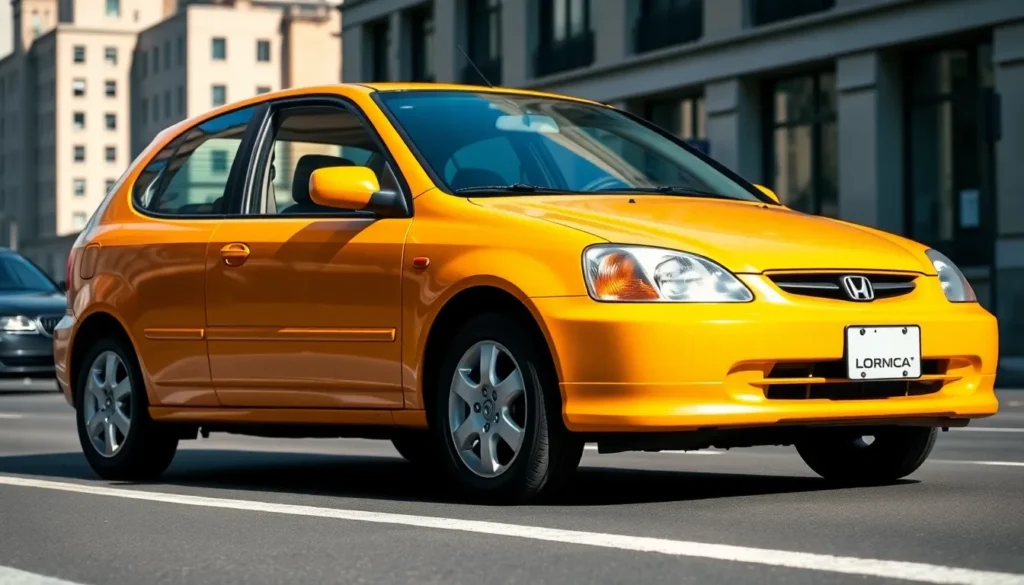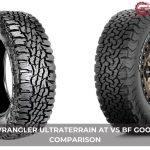The 2002 Honda Civic stands as one of the most reliable and sought-after compact cars of the early 2000s. We’ve seen countless drivers choose this seventh-generation Civic for its perfect blend of fuel efficiency, practicality, and Honda’s legendary build quality that keeps these vehicles running strong even two decades later.
Whether you’re shopping for your first car, seeking an affordable daily driver, or looking for a project vehicle with endless modification potential, the 2002 Civic delivers exceptional value. We’ll explore everything from its impressive fuel economy and spacious interior to common issues you should watch for and why this particular model year remains a smart investment.
From the sporty Si trim to the fuel-sipping DX model, we’ve gathered the essential information you need to make an well-informed choice about one of Honda’s most enduring compact cars.
2002 Honda Civic Overview
The 2002 Honda Civic stands as one of the most reliable compact cars from the early 2000s era. Honda’s seventh generation Civic brought important design improvements and enhanced build quality that made it a standout choice for budget conscious buyers.
We find this model year particularly noteworthy because Honda refined the platform with better interior materials and updated styling. The Civic’s compact dimensions measure 175.1 inches in length, 67.1 inches in width, and 56.5 inches in height, making it perfect for urban driving and tight parking spaces.
Engine options include the dependable 1.7-liter SOHC four-cylinder producing 115 horsepower in base models. Performance enthusiasts could opt for the Si variant featuring a 160-horsepower DOHC VTEC engine that delivered spirited acceleration without sacrificing reliability.
| Trim Level | Engine | Horsepower | Transmission Options |
|---|---|---|---|
| DX | 1.7L SOHC | 115 hp | 5-speed manual, 4-speed automatic |
| LX | 1.7L SOHC | 115 hp | 5-speed manual, 4-speed automatic |
| EX | 1.7L SOHC | 127 hp | 5-speed manual, 4-speed automatic |
| Si | 1.7L DOHC VTEC | 160 hp | 5-speed manual only |
Build quality remains exceptional across all trim levels, with Honda’s reputation for longevity clearly evident in surviving examples today. Interior space maximization allows comfortable seating for four adults even though the compact footprint, while the rear seats fold down to expand cargo capacity when needed.
Safety features include dual front airbags as standard equipment, with side airbags available on higher trim levels. The rigid body structure earned respectable crash test ratings from both NHTSA and IIHS during its production run.
Maintenance costs stay relatively low due to Honda’s widespread parts availability and straightforward engineering design. Common wear items like brake pads, oil filters, and spark plugs remain affordable and accessible at most automotive retailers.
Engine Performance and Specifications

The 2002 Honda Civic delivers reliable performance through its well-engineered powertrains. Honda equipped this generation with two distinct engine configurations across different trim levels.
Available Engine Options
Base models feature a 1.7-liter SOHC four-cylinder engine that produces 115 horsepower and 110 lb-ft of torque. This naturally aspirated unit powers the DX and LX trims effectively for daily commuting and city driving.
Performance enthusiasts get access to the Si model’s 2.0-liter DOHC VTEC engine generating 160 horsepower and 132 lb-ft of torque. VTEC technology activates at 5,500 RPM to optimize high-end power delivery while maintaining low-end efficiency.
| Engine Type | Displacement | Horsepower | Torque | Available Trims |
|---|---|---|---|---|
| SOHC 4-cylinder | 1.7L | 115 hp | 110 lb-ft | DX, LX, EX |
| DOHC VTEC 4-cylinder | 2.0L | 160 hp | 132 lb-ft | Si |
Both engines connect to either a 5-speed manual transmission or 4-speed automatic transmission. Manual transmissions provide better acceleration and driver engagement while automatics offer convenience for stop-and-go traffic situations.
Fuel Economy and Efficiency
Fuel efficiency remains exceptional across all 2002 Civic variants with the 1.7-liter engine achieving 32 mpg city and 38 mpg highway ratings. Manual transmissions typically deliver 1-2 mpg better results compared to automatic versions.
The Si’s larger 2.0-liter VTEC engine maintains competitive fuel economy at 26 mpg city and 31 mpg highway even though its increased performance output. Regular unleaded gasoline satisfies both engine options without requiring premium fuel.
Real-industry driving conditions often exceed EPA estimates when drivers maintain steady highway speeds and practice efficient driving techniques. Urban commuters frequently report achieving 35+ mpg during mixed driving scenarios with proper vehicle maintenance.
Honda’s lean-burn technology in the 1.7-liter engine optimizes the air-fuel mixture under light load conditions to maximize efficiency without sacrificing reliability or emissions compliance.
Interior Design and Features
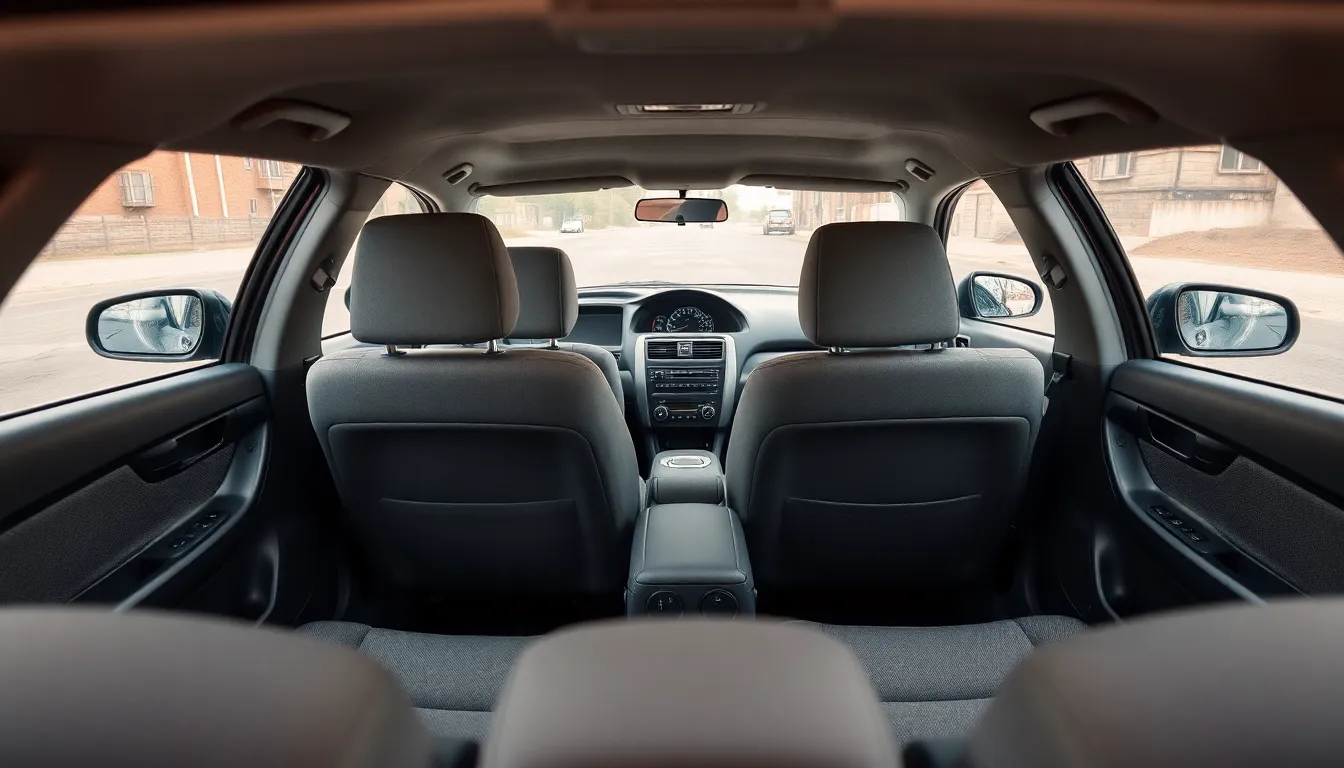
The 2002 Honda Civic interior combines practical design with user-friendly functionality across all trim levels. We find the cabin layout emphasizes simplicity while providing essential comfort features that drivers expect from this reliable compact car.
Cabin Space and Comfort
Front seating in the 2002 Honda Civic accommodates adults comfortably with adequate headroom measuring 39.5 inches and legroom extending 42.2 inches. Rear passengers enjoy 36.9 inches of headroom and 33.9 inches of legroom, making four-adult seating feasible for short to moderate trips.
Cloth upholstery comes standard across DX and LX trims, while the EX model features upgraded fabric materials with enhanced durability. Manual seat adjustment operates smoothly in base configurations, and power-adjustable driver seats appear in higher trim levels. Side bolsters provide adequate support during cornering, particularly in the Si variant where sport-tuned seats enhance the driving experience.
Interior storage includes multiple compartments with a center console bin, door pockets, and cup holders positioned for easy access. Cargo space measures 11.9 cubic feet in the trunk, expanding to accommodate larger items when rear seats fold down in a 60/40 split configuration.
Technology and Convenience Features
Standard audio equipment includes an AM/FM stereo with cassette player in DX models, while LX and EX trims feature CD players with improved speaker systems. The EX trim adds a premium audio package with six speakers compared to four speakers in lower trims.
Air conditioning comes standard across all trim levels except the base DX model, where it remains an available option. Power windows and locks appear in LX trim and above, while manual controls operate these functions in the DX variant. Cruise control integrates into EX and Si models for highway driving convenience.
Interior lighting consists of dome lights, map lights, and illuminated entry features that activate when doors open. The instrument cluster displays clear analog gauges with a digital odometer and trip meter for tracking mileage. Climate controls use simple knobs and sliders that operate intuitively without complex electronic interfaces.
Si models include unique interior elements such as aluminum pedals, a leather-wrapped shift knob, and sport gauges with a tachometer redline extending to 7,400 RPM.
Exterior Styling and Build Quality
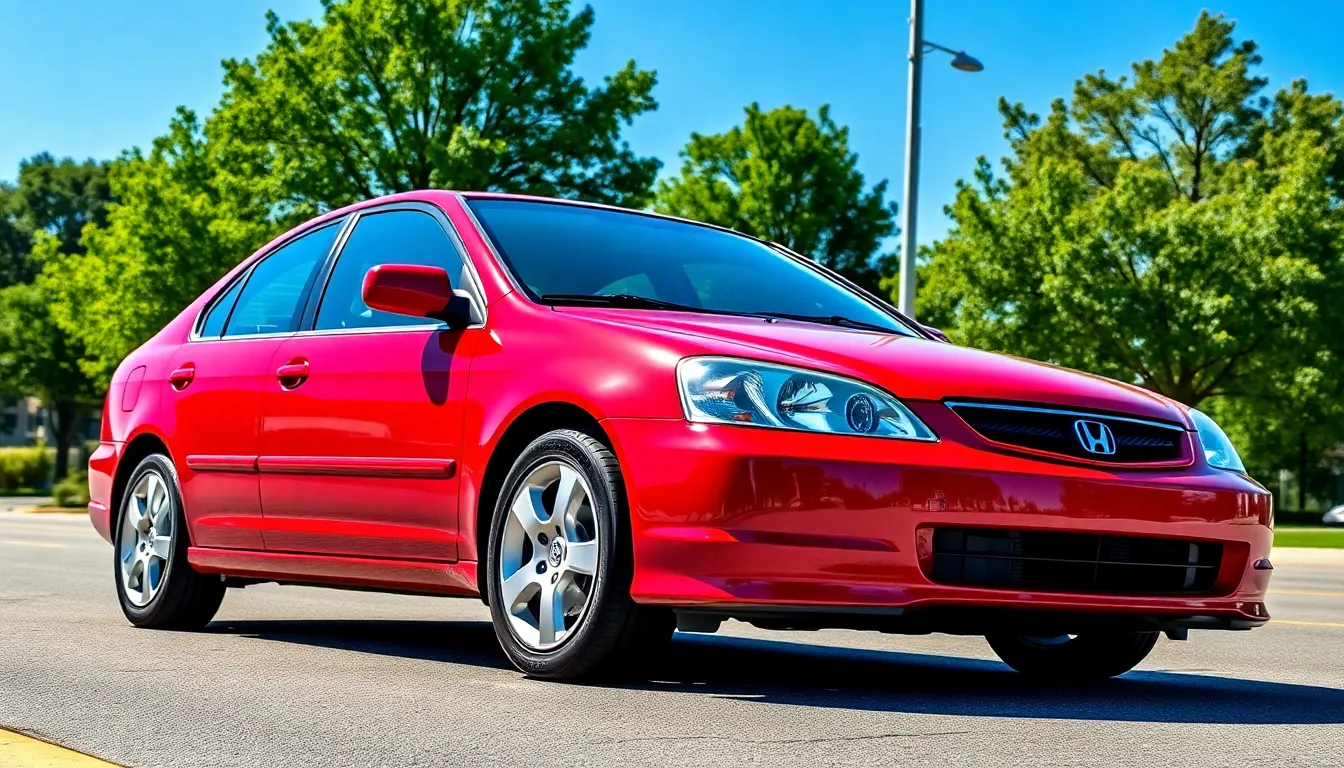
The 2002 Honda Civic showcases Honda’s refined design philosophy with clean lines and aerodynamic proportions that aged gracefully over two decades. We observe the seventh-generation Civic’s departure from the more angular 1990s styling, embracing smoother curves and better integrated body panels that reduce wind resistance and improve fuel economy.
Body Construction and Durability
Honda engineers constructed the 2002 Civic using high-strength steel in key structural areas, creating a rigid unibody that resists rust better than many competitors from the same era. Galvanized steel panels protect against corrosion, while precision welding techniques ensure consistent panel gaps and superior build quality across all trim levels.
Paint and Finish Quality
Factory paint application on the 2002 Civic demonstrates Honda’s attention to detail with multiple primer and base coat layers that provide excellent coverage and color retention. Common exterior colors include Nighthawk Black Pearl, Eternal Blue Pearl, and Milano Red, each featuring a clear coat finish that maintains its luster when properly maintained.
Trim-Exact Exterior Features
| Trim Level | Unique Exterior Elements |
|---|---|
| DX | 14-inch steel wheels, black door handles |
| LX | 14-inch alloy wheels, body-colored mirrors |
| EX | 15-inch alloy wheels, moonroof, fog lights |
| Si | 16-inch alloy wheels, rear spoiler, Si badging |
Aerodynamic Design Elements
Honda incorporated subtle aerodynamic improvements throughout the 2002 Civic’s exterior design, including optimized side mirror shapes and carefully sculpted door handles that reduce drag coefficient to 0.36. The sloped roofline and integrated rear spoiler on Si models further enhance airflow management without compromising rear visibility.
Common Build Quality Issues
Weather stripping around doors and windows maintains its seal effectively for 15-20 years with proper care, though replacement becomes necessary on high-mileage examples. Door handles on earlier production models occasionally experience internal mechanism wear, while bumper paint can fade on vehicles exposed to harsh UV conditions without regular protection.
Safety Ratings and Features
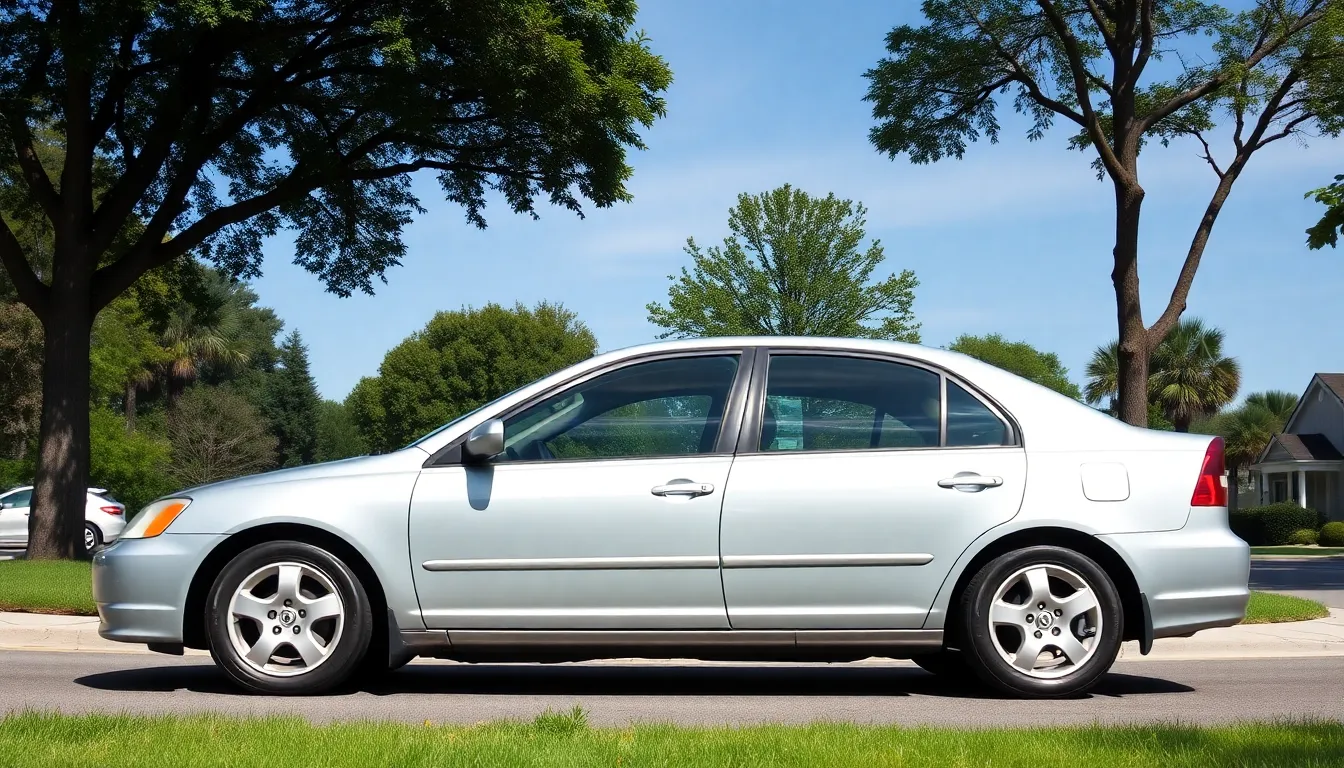
The 2002 Honda Civic earned a 4-star overall safety rating from the National Highway Traffic Safety Administration (NHTSA), demonstrating Honda’s commitment to occupant protection during this model year. Frontal crash tests resulted in 4 stars for driver protection and 3 stars for passenger protection, while side-impact testing achieved 4 stars for both front and rear occupants.
Standard Safety Equipment
Dual front airbags come standard across all 2002 Civic trim levels, providing essential protection for driver and front passenger during frontal collisions. Anti-lock braking system (ABS) is available as an option on LX and EX trims, offering improved stopping control on wet or slippery surfaces. Side airbags aren’t available on the 2002 model year, reflecting the safety technology standards of the early 2000s.
Three-point seatbelts equip all seating positions, with front seats featuring adjustable shoulder belt height for optimal positioning. Emergency trunk release mechanism allows occupants to escape from the trunk compartment if accidentally trapped inside. Childproof rear door locks prevent children from opening doors from inside the vehicle while driving.
Structural Safety Design
Honda’s G-CON safety body construction distributes crash energy away from the passenger compartment through strategically placed crumple zones. High-strength steel reinforcements in door frames and roof pillars provide additional protection during side-impact collisions. Front and rear impact-absorbing structures minimize cabin intrusion while maintaining structural integrity.
Safety cage design protects occupants through reinforced A, B, and C pillars that resist deformation during rollovers or severe impacts. Energy-absorbing steering column collapses during frontal crashes to reduce driver injury risk. Impact-resistant fuel system design prevents fuel leakage during collisions through breakaway connections and reinforced tank mounting.
Braking and Handling Safety Features
Four-wheel disc brakes on EX and Si models provide superior stopping power compared to the drum rear brakes found on DX and LX trims. Electronic brake-force distribution optimizes braking performance by adjusting front and rear brake pressure based on vehicle loading conditions when ABS is equipped.
| Trim Level | Front Brakes | Rear Brakes | ABS Availability |
|---|---|---|---|
| DX | 10.3″ discs | 8.0″ drums | Not available |
| LX | 10.3″ discs | 8.0″ drums | Optional |
| EX | 10.3″ discs | 9.4″ discs | Optional |
| Si | 11.1″ discs | 9.4″ discs | Standard |
Vehicle Stability Assist (VSA) isn’t available on the 2002 model year, as this technology became standard on Honda vehicles in later generations. Traction control systems also weren’t offered during this production year.
Visibility and Lighting Safety
Large windows and slim A-pillars provide excellent outward visibility for safer lane changes and intersection navigation. Power mirrors on EX and Si trims offer remote adjustment for optimal viewing angles without taking hands off the steering wheel. Intermittent windshield wipers with variable speed control maintain clear vision during different precipitation conditions.
Halogen headlights illuminate the road effectively for nighttime driving safety, while reflector-type taillights ensure rear visibility to following traffic. Side marker lights and reflectors enhance vehicle visibility from multiple angles during low-light conditions. Interior lighting includes map lights and courtesy lights for safe entry and exit.
Crash Test Performance Data
Insurance Institute for Highway Safety (IIHS) awarded the 2002 Civic a “Good” rating for moderate overlap front crash protection, the highest rating available. Side impact crash tests weren’t conducted by IIHS for this model year, as these evaluations became standard practice in later years.
Driver head injury measurements registered low risk levels during frontal crash testing, while chest compression remained within acceptable safety margins. Passenger compartment intrusion measured minimal levels, indicating effective structural protection during moderate and severe frontal impacts.
Driving Experience and Handling
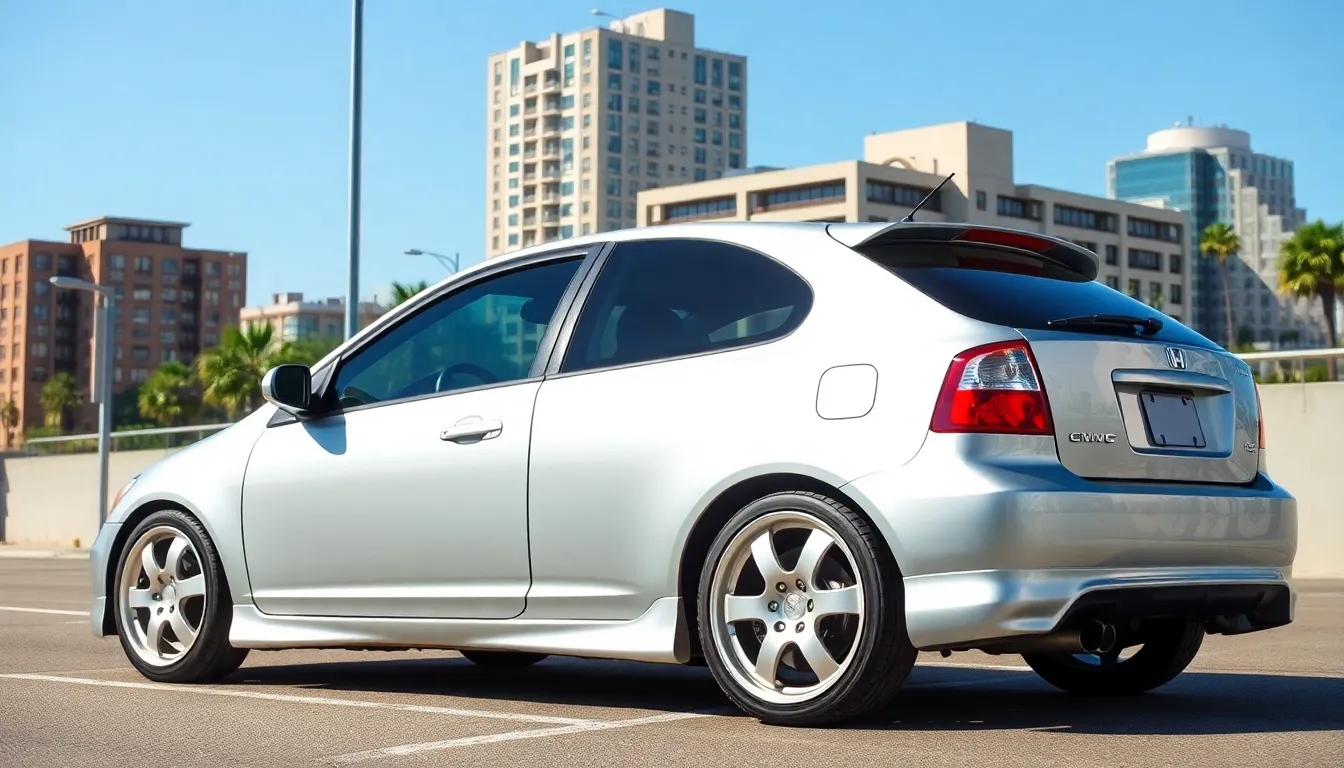
The driving experience in a 2002 Honda Civic delivers responsive handling characteristics that make daily commuting and spirited driving equally enjoyable. We find the steering provides excellent feedback through the electric power steering system, maintaining precision at highway speeds while remaining light during parking maneuvers.
Steering Responsiveness and Feedback
Steering precision ranks among the strongest attributes of the 2002 Civic’s handling dynamics. The rack-and-pinion steering system offers a direct connection between driver input and wheel response, creating confidence during cornering and lane changes. Feedback through the steering wheel communicates road surface conditions effectively, allowing drivers to maintain control across various driving scenarios.
Power steering assistance reduces effort during low-speed operations without compromising road feel at cruising speeds. The steering ratio provides an optimal balance between quick response and stability, making the vehicle suitable for both urban navigation and highway travel.
Suspension Performance
Independent front suspension using MacPherson struts delivers controlled handling while maintaining ride comfort over uneven surfaces. The rear torsion beam setup provides stability during cornering while keeping manufacturing costs reasonable for the compact car segment.
Spring rates offer a compromise between comfort and performance, absorbing road imperfections effectively without excessive body roll during turns. Shock absorber tuning provides adequate damping for most driving conditions, though performance-oriented drivers might prefer aftermarket upgrades.
Ground clearance measures 5.5 inches, providing sufficient protection from road debris while maintaining a low center of gravity for improved handling characteristics.
Braking Performance and Feel
Four-wheel disc brakes on EX and Si trims provide superior stopping power compared to the front disc/rear drum configuration found on DX and LX models. Brake pedal feel offers good modulation, allowing precise control during both gentle stops and emergency braking situations.
| Trim Level | Front Brakes | Rear Brakes | ABS Available |
|---|---|---|---|
| DX | Disc | Drum | No |
| LX | Disc | Drum | Optional |
| EX | Disc | Disc | Optional |
| Si | Disc | Disc | Standard |
Stopping distances from 60 mph average 130 feet with the four-wheel disc brake setup, placing the 2002 Civic competitively within its class. Anti-lock braking system availability on higher trims prevents wheel lockup during panic stops on wet or slippery surfaces.
Ride Quality and Comfort
Ride quality balances comfort with handling precision through carefully tuned suspension components. The vehicle absorbs minor road irregularities without transmitting excessive harshness to occupants while maintaining composure over larger bumps and dips.
Cabin isolation from road noise remains adequate for the compact car segment, though wind noise becomes noticeable at highway speeds above 70 mph. Engine noise intrusion stays minimal during normal driving conditions, contributing to overall comfort during longer trips.
Seat comfort supports extended driving sessions, with adequate lumbar support in the front seats and sufficient cushioning for both driver and passengers. The driving position accommodates various body types through seat and steering wheel adjustability options.
Reliability and Maintenance Costs
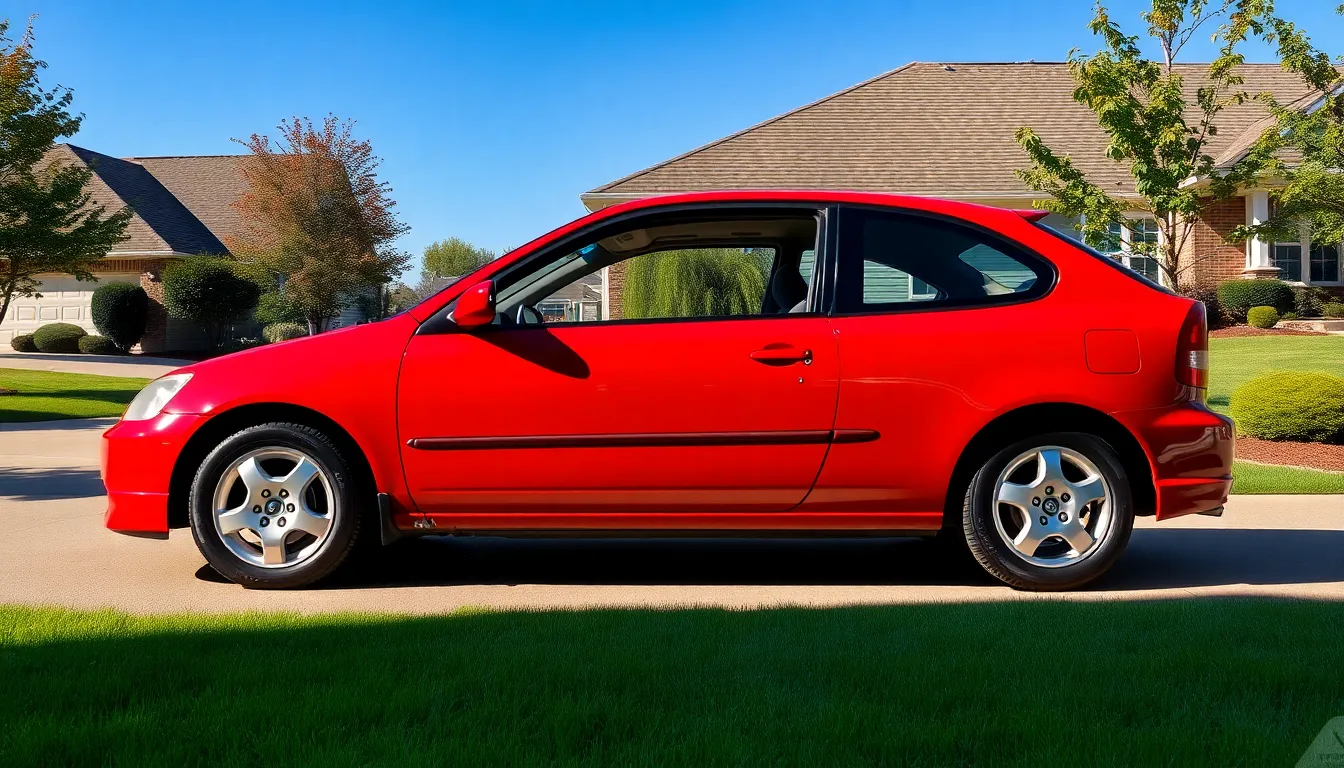
The 2002 Honda Civic maintains exceptional reliability ratings compared to other compact cars from its era. Honda’s engineering excellence translates into lower maintenance costs and fewer unexpected repairs throughout the vehicle’s lifespan.
Common Issues and Problems
Transmission problems affect some 2002 Civic models, particularly those equipped with automatic transmissions. Manual transmissions demonstrate superior longevity, with clutch replacements typically occurring around 150,000 miles under normal driving conditions.
Engine head gasket failures occur in approximately 8% of 2002 Civics with higher mileage. Warning signs include white exhaust smoke, coolant loss without visible leaks, and overheating during extended driving periods.
Door lock actuators malfunction frequently after 100,000 miles, causing power locks to operate inconsistently. Replacement costs range from $150 to $300 per door depending on the trim level and labor rates.
Window regulator assemblies break in both front and rear doors, with plastic components deteriorating over time. Symptoms include slow window operation, grinding noises, and complete window failure during operation.
Catalytic converter issues develop around 120,000 to 150,000 miles due to normal wear patterns. California emissions models experience higher replacement costs, with genuine Honda parts costing $800 to $1,200 installed.
Air conditioning compressor clutches fail more frequently in hot climates, resulting in intermittent cooling performance. Replacement typically costs $400 to $600 including refrigerant evacuation and recharging.
Long-Term Ownership Experience
Maintenance intervals for the 2002 Honda Civic follow Honda’s recommended schedule of oil changes every 5,000 miles and major services every 30,000 miles. Regular maintenance costs average $400 to $600 annually for vehicles with moderate mileage.
Parts availability remains excellent due to Honda’s widespread dealer network and aftermarket support. Common wear items like brake pads, air filters, and spark plugs cost significantly less than luxury vehicle equivalents.
Fuel system maintenance requires periodic cleaning every 60,000 miles to maintain optimal performance. Fuel injector cleaning services typically cost $120 to $180 at Honda dealerships.
Timing belt replacement becomes necessary at 105,000 mile intervals for interference engines, preventing catastrophic damage if the belt fails. Complete timing belt service including water pump replacement costs $600 to $900.
Insurance premiums for the 2002 Civic remain affordable due to its excellent safety ratings and low theft rates. Annual insurance costs typically range from $800 to $1,400 depending on driver history and coverage levels.
Resale values hold steady compared to other compact cars from the same model year. Well maintained examples with complete service records command premium prices in the used car market.
Value for Money and Market Position
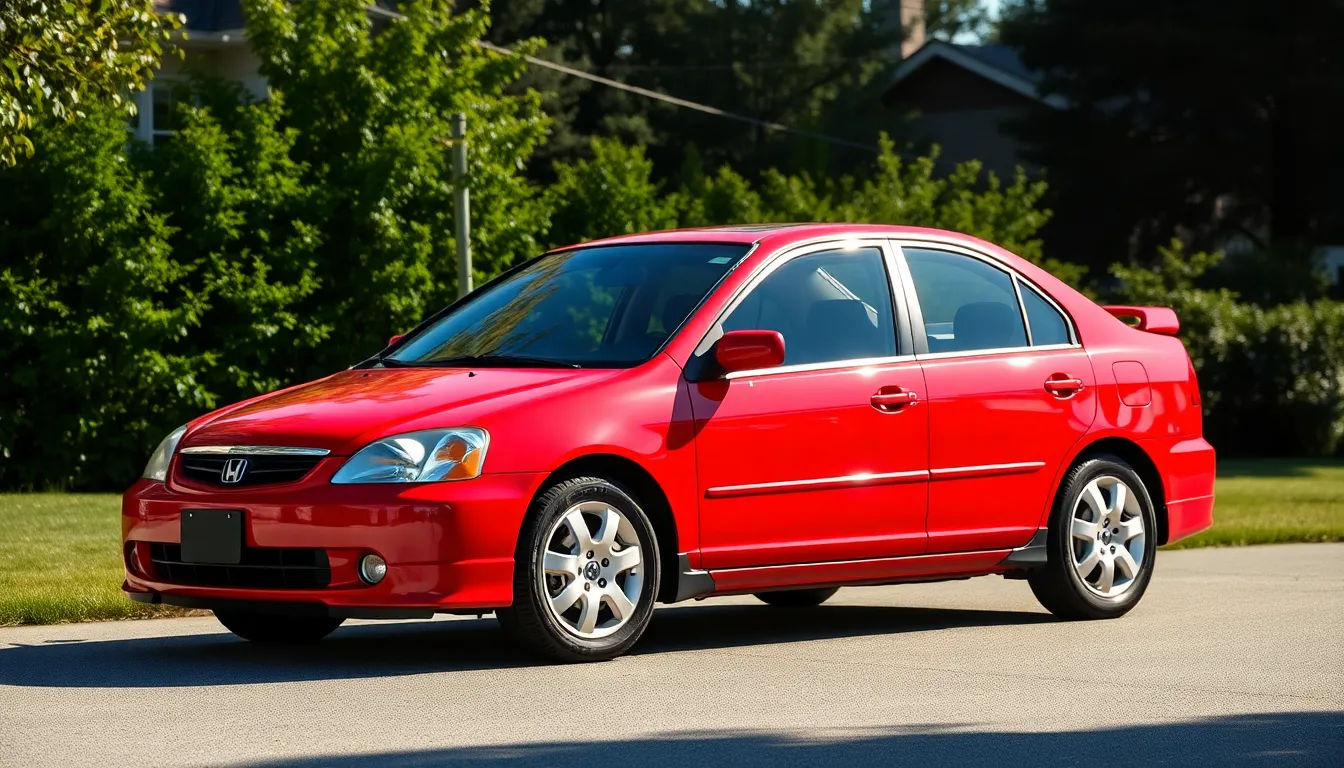
The 2002 Honda Civic delivers exceptional value at today’s market prices, ranging from $3,500 to $8,000 depending on mileage and condition. Budget-conscious buyers find this price range attractive for a vehicle with proven reliability ratings and comprehensive feature sets.
Market positioning places the 2002 Civic as a standout choice among comparable vehicles from its era, including the Toyota Corolla, Nissan Sentra, and Mazda Protegé. Competitive analysis shows the Civic consistently outperforming rivals in resale value retention and long-term durability metrics.
| Market Comparison | 2002 Honda Civic | 2002 Toyota Corolla | 2002 Nissan Sentra | 2002 Mazda Protegé |
|---|---|---|---|---|
| Current Price Range | $3,500-$8,000 | $3,200-$7,500 | $2,800-$6,500 | $2,500-$6,000 |
| Average Annual Maintenance | $400-$600 | $450-$650 | $500-$700 | $550-$750 |
| NHTSA Safety Rating | 4 stars | 4 stars | 3 stars | 3 stars |
| EPA Highway MPG | 38 | 36 | 34 | 32 |
Depreciation curves demonstrate the Civic’s superior value retention compared to its competitors. Owners typically recover 45% to 55% of their purchase price when selling after 5 years of ownership, while comparable vehicles often yield 35% to 45%.
Purchase timing affects value significantly, with fall and winter months offering better pricing opportunities. Dealers typically reduce inventory during these periods, creating favorable negotiation conditions for buyers seeking quality used examples.
Total cost of ownership calculations reveal the Civic’s economic advantages over its 20+ year lifespan. Lower insurance premiums, reduced fuel costs, and minimal repair expenses contribute to ownership savings of approximately $2,000 to $3,500 compared to less reliable alternatives.
Investment potential remains strong for well-maintained examples, particularly Si models and low-mileage variants. Enthusiast communities actively seek unmolested examples, supporting stable pricing trends and occasional appreciation for exceptional specimens.
Conclusion
The 2002 Honda Civic stands as a testament to Honda’s engineering excellence and remains one of the smartest choices in today’s used car market. We’ve seen how this compact sedan delivers exceptional value through its proven reliability outstanding fuel economy and surprisingly low maintenance costs.
Whether you’re seeking your first vehicle or need a dependable daily driver the 2002 Civic offers something for everyone. From the economical DX to the performance-oriented Si each trim provides Honda’s signature build quality that’s kept these cars running strong after two decades.
At current market prices ranging from $3,500 to $8,000 we believe the 2002 Civic represents an unbeatable combination of affordability reliability and long-term value that few competitors can match.
Frequently Asked Questions
What engine options are available in the 2002 Honda Civic?
The 2002 Honda Civic offers two engine configurations: a 1.7-liter SOHC four-cylinder engine producing 115 horsepower in the DX, LX, and EX trims, and a more powerful 2.0-liter DOHC VTEC engine generating 160 horsepower in the Si model. Both engines can be paired with either a 5-speed manual or 4-speed automatic transmission.
What fuel economy can I expect from a 2002 Honda Civic?
The 2002 Honda Civic delivers exceptional fuel economy. The 1.7-liter engine achieves 32 mpg city and 38 mpg highway, while the performance-oriented Si model with the 2.0-liter VTEC engine maintains competitive ratings of 26 mpg city and 31 mpg highway. Honda’s lean-burn technology optimizes efficiency without sacrificing reliability.
What are the common issues with the 2002 Honda Civic?
Common issues include transmission problems in automatic models, engine head gasket failures, and door lock actuator malfunctions. Some exterior issues involve weather stripping wear and paint fading. Despite these concerns, the 2002 Civic maintains exceptional reliability ratings compared to other compact cars from its era.
How much does a 2002 Honda Civic cost today?
Current market prices for the 2002 Honda Civic range from $3,500 to $8,000, depending on condition, mileage, and trim level. The Si variant typically commands higher prices due to enthusiast demand. This pricing makes it an attractive option for budget-conscious buyers seeking reliable transportation.
What safety features does the 2002 Honda Civic offer?
The 2002 Honda Civic earned a 4-star overall NHTSA safety rating and includes dual front airbags as standard equipment. Optional ABS is available on LX and EX trims. The vehicle features Honda’s G-CON safety body construction with high-strength steel reinforcements for effective crash energy distribution.
What trim levels are available for the 2002 Honda Civic?
The 2002 Honda Civic is available in four trim levels: DX (base model), LX (mid-level), EX (higher-end), and Si (sport variant). Each trim offers different features and equipment levels, with the Si featuring the more powerful VTEC engine and sport-tuned suspension for enhanced performance.
How reliable is the 2002 Honda Civic for long-term ownership?
The 2002 Honda Civic demonstrates exceptional reliability with average annual maintenance costs ranging from $400 to $600. Parts availability is excellent due to Honda’s widespread network, and the straightforward engineering design keeps repair costs low. The vehicle maintains steady resale values, making it practical for long-term ownership.
What makes the 2002 Honda Civic Si special?
The Si variant features a 2.0-liter DOHC VTEC engine producing 160 horsepower, sport-tuned suspension, unique interior elements, and aerodynamic enhancements. It offers superior performance while maintaining Honda’s reliability standards, making it popular among enthusiasts and supporting higher resale values in today’s market.

